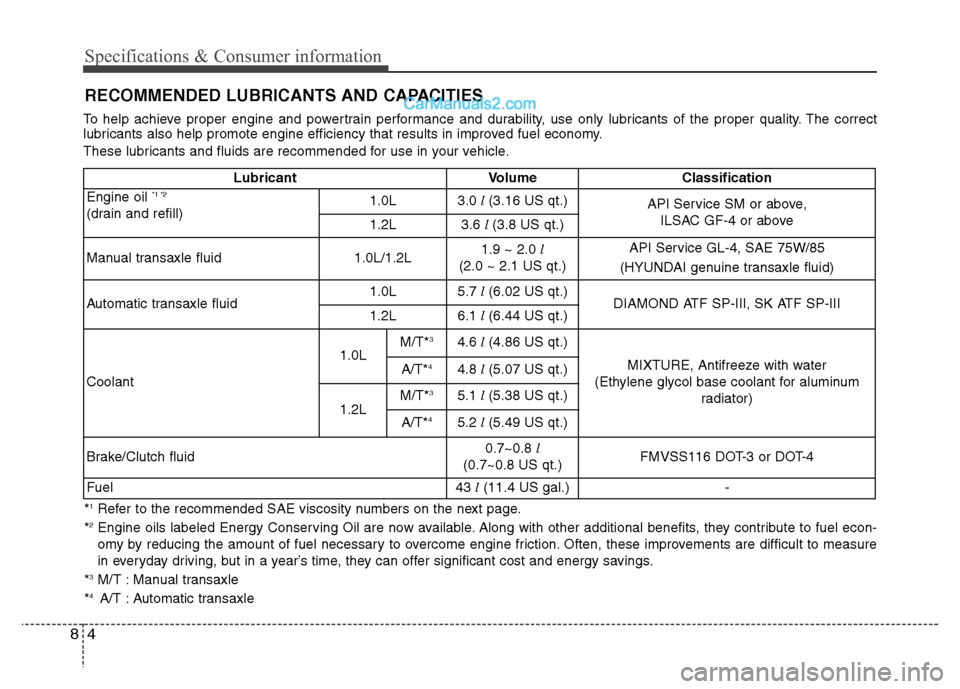Page 299 of 343

Maintenance
52
7
FUSES
A vehicle’s electrical system is protected
from electrical overload damage by
fuses.
This vehicle has 2 fuse panels, one locat-
ed in the driver’s side panel bolster, the
other in the engine compartment near
the battery.
If any of your vehicle’s lights, acces-
sories, or controls do not work, check the
appropriate circuit fuse. If a fuse has
blown, the element inside the fuse willmelt.
If the electrical system does not work,
first check the driver’s side fuse panel.
Always replace a blown fuse with one of
the same rating.
If the replacement fuse blows, this indi-
cates an electrical problem. Avoid using
the system involved and we recommend
that you consult an authorized HYUNDAI
dealer.
✽✽NOTICE
Three kinds of fuses are used: blade
type for lower amperage rating, car-
tridge type, and fusible link for higher
amperage ratings.
OJC070046D
Normal
Normal
■
Blade type
■ Cartridge type
■ Multi fuse Blown
Blown
Normal Blown
WARNING - Fuse replace-
ment
Never replace a fuse with any- thing but another fuse of the same rating.
A higher capacity fuse could cause damage and possibly a
fire.
Never install a wire or aluminum foil instead of the proper fuse -
even as a temporary repair. It may
cause extensive wiring damage
and a possible fire.
CAUTION
Do not use a screwdriver or any
other metal object to remove fuses
because it may cause a short circuit and damage the system.
Page 335 of 343

Specifications & Consumer information
4
8
RECOMMENDED LUBRICANTS AND CAPACITIES
To help achieve proper engine and powertrain performance and durability, use only lubricants of the proper quality. The correct
lubricants also help promote engine efficiency that results in improved fuel economy.
These lubricants and fluids are recommended for use in your vehicle.
Lubricant Volume Classification
Engine oil *1 *2
(drain and refill)
1.0L 3.0
l (3.16 US qt.)
API Service SM or above,
ILSAC GF-4 or above
1.2L 3.6
l (3.8 US qt.)
Manual transaxle fluid
1.0L/1.2L 1.9 ~ 2.0
l
(2.0 ~ 2.1 US qt.) API Service GL-4, SAE 75W/85
(HYUNDAI genuine transaxle fluid)
Automatic transaxle fluid
1.0L 5.7
l (6.02 US qt.)
DIAMOND ATF SP-III, SK ATF SP-III
1.2L6.1
l (6.44 US qt.)
Coolant
1.0LM/T* 34.6
l (4.86 US qt.)
MIXTURE, Antifreeze with water
(Ethylene glycol base coolant for aluminum radiator)A/T*44.8
l (5.07 US qt.)
1.2LM/T* 35.1
l (5.38 US qt.)
A/T* 45.2
l (5.49 US qt.)
Brake/Clutch fluid0.7~0.8 l
(0.7~0.8 US qt.)FMVSS116 DOT-3 or DOT-4
Fuel43 l(11.4 US gal.)-
*1
Refer to the recommended SAE viscosity numbers on the next page.
* 2
Engine oils labeled Energy Conserving Oil are now available. Along with other additional benefits, they contribute to fuel econ-
omy by reducing the amount of fuel necessary to overcome engine friction. Often, these improvements are difficult to measure
in everyday driving, but in a year’s time, they can offer significant cost and energy savings.
* 3
M/T : Manual transaxle
* 4
A/T : Automatic transaxle
Page 336 of 343

85
Specifications & Consumer information
Recommended SAE viscosity
number Engine oil viscosity (thickness) has an
effect on fuel economy and cold weather
operation (engine start and engine oil
flowability). Lower viscosity engine oils
can provide better fuel economy and cold
weather performance, however, higher
viscosity engine oils are required for sat-
isfactory lubrication in hot weather.Using oils of any viscosity other thanthose recommended could result in
engine damage.
When choosing an oil, consider the range
of temperature your vehicle will be oper-
ated in before the next oil change.Proceed to select the recommended oil
viscosity from the chart.
CAUTION
Always be sure to clean the area
around any filler plug, drain plug, ordipstick before checking or drain-
ing any lubricant. This is especiallyimportant in dusty or sandy areasand when the vehicle is used on
unpaved roads. Cleaning the plugand dipstick areas will prevent dirt and grit from entering the engine and other mechanisms that could
be damaged.
Temperature Range for SAE Viscosity Numbers
Temperature °C
(°F)-30 -20 -10 0 10 20 30 40 50 -10 0 20 40 60 80 100 120
*1. For better fuel economy, it is recommended to use the engine oil of a viscosity grade SAE5W-20 (API SM / ILSAC GF-4). However, if the engine oil is not available in your country,
select the proper engine oil using the engine oil viscosity chart.
*2. For middle East, do not use engine oil of viscosity grade SAE 5W-20.
Gasoline
Engine Oil * 1
20W-50
10W-30
15W-40
5W-20*
2
, 5W-30
Page 338 of 343
87
Specifications & Consumer information
The tires supplied on your new vehicle
are chosen to provide the best perform-
ance for normal driving.
The tire label located on the driver's side
center pillar gives the tire pressures rec-
ommended for your vehicle.The engine number is stamped on the
engine block as shown in the drawing.
A compressor label informs you the type
of compressor your vehicle is equipped
with such as model, supplier part num-
ber, production number, refrigerant (1)
and refrigerant oil (2).
OBA073010
TIRE SPECIFICATION AND PRESSURE LABEL
OHDC081001
AIR CONDITIONER COMPRESSOR LABEL
ENGINE NUMBEROBA083003
Page:
< prev 1-8 9-16 17-24